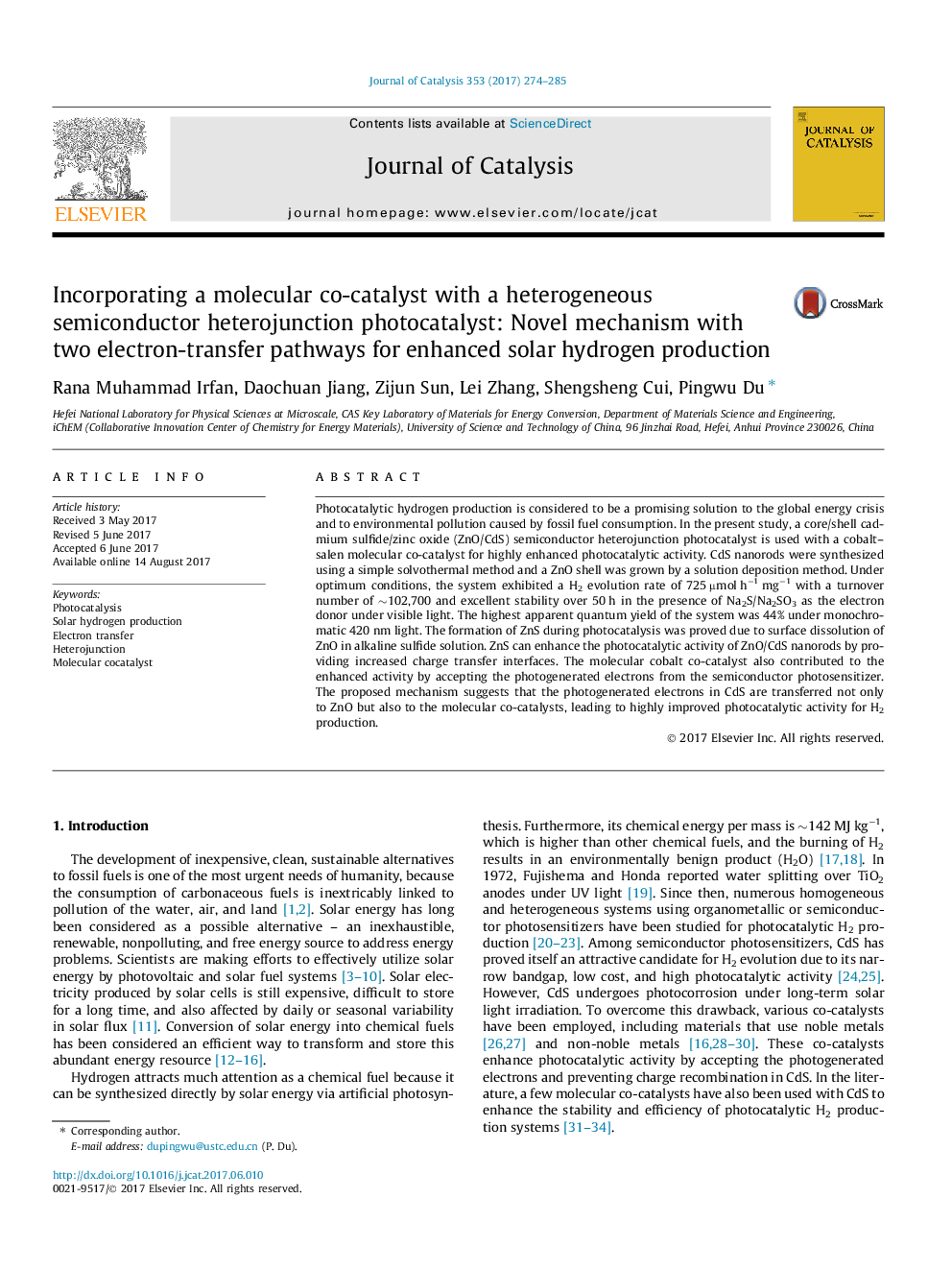| کد مقاله | کد نشریه | سال انتشار | مقاله انگلیسی | نسخه تمام متن |
|---|---|---|---|---|
| 6455598 | 1419756 | 2017 | 12 صفحه PDF | دانلود رایگان |
- CdS/ZnO/ZnS heterojunctions with a molecular co-catalyst showed a synergistic effect.
- ZnS was formed in situ on CdS/ZnO to increase the charge transfer process.
- The photogenerated electrons are transferred to both ZnO and the molecular co-catalyst.
- ZnO, ZnS, and a cobalt co-catalyst together promoted solar H2 production.
Photocatalytic hydrogen production is considered to be a promising solution to the global energy crisis and to environmental pollution caused by fossil fuel consumption. In the present study, a core/shell cadmium sulfide/zinc oxide (ZnO/CdS) semiconductor heterojunction photocatalyst is used with a cobalt-salen molecular co-catalyst for highly enhanced photocatalytic activity. CdS nanorods were synthesized using a simple solvothermal method and a ZnO shell was grown by a solution deposition method. Under optimum conditions, the system exhibited a H2 evolution rate of 725 µmol hâ1 mgâ1 with a turnover number of â¼102,700 and excellent stability over 50 h in the presence of Na2S/Na2SO3 as the electron donor under visible light. The highest apparent quantum yield of the system was 44% under monochromatic 420 nm light. The formation of ZnS during photocatalysis was proved due to surface dissolution of ZnO in alkaline sulfide solution. ZnS can enhance the photocatalytic activity of ZnO/CdS nanorods by providing increased charge transfer interfaces. The molecular cobalt co-catalyst also contributed to the enhanced activity by accepting the photogenerated electrons from the semiconductor photosensitizer. The proposed mechanism suggests that the photogenerated electrons in CdS are transferred not only to ZnO but also to the molecular co-catalysts, leading to highly improved photocatalytic activity for H2 production.
89
Journal: Journal of Catalysis - Volume 353, September 2017, Pages 274-285
